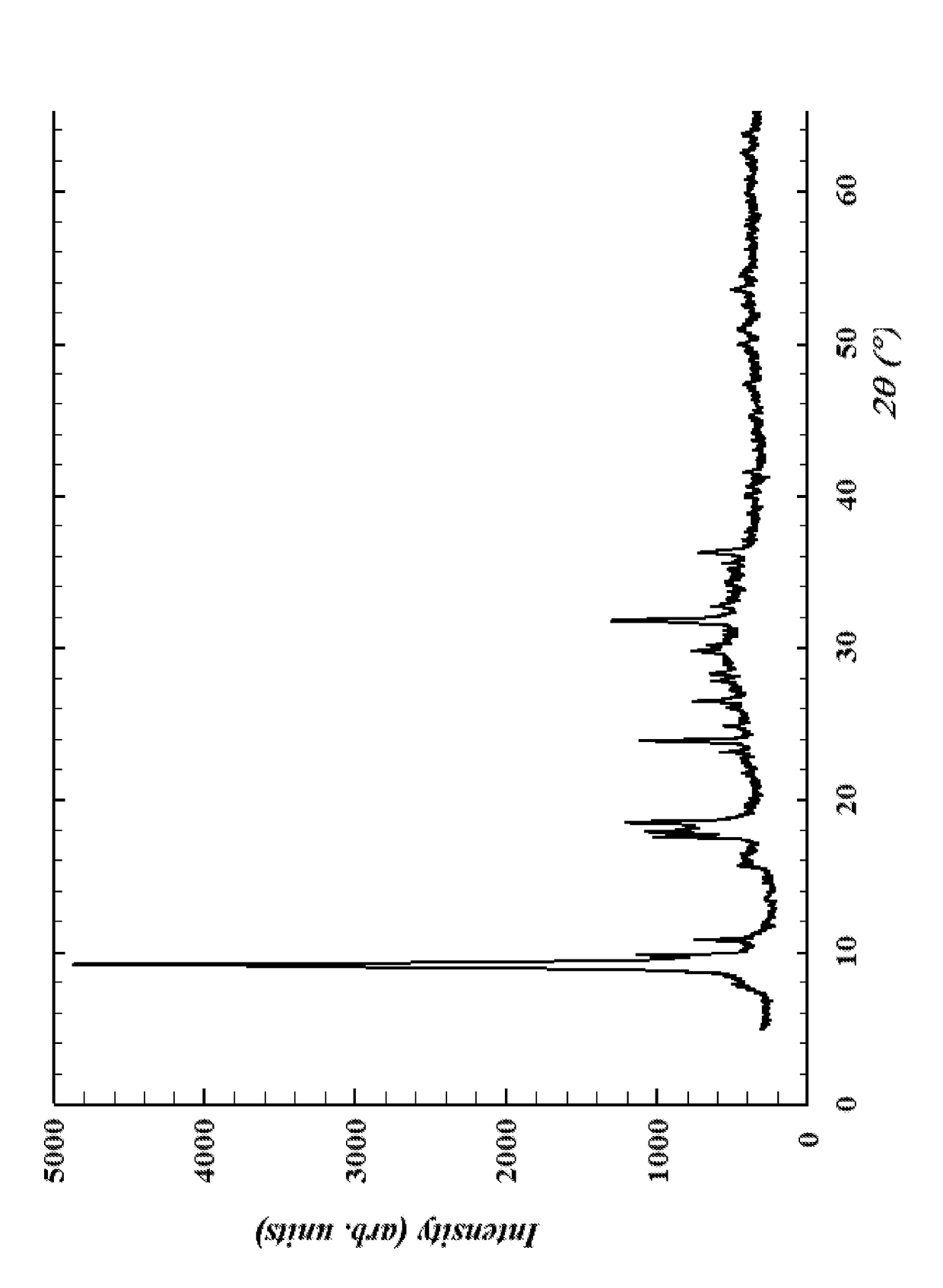Crystalline transition metal molybdotungstate
a transition metal and molybdotungstate technology, applied in the direction of catalyst activation/preparation, physical/chemical process catalysts, aromatic hydrocarbon hydrogenation, etc., can solve the problems of accentuated refining problems and raised doubts about the quality of the structural assessment of materials
- Summary
- Abstract
- Description
- Claims
- Application Information
AI Technical Summary
Benefits of technology
Problems solved by technology
Method used
Image
Examples
example 1
[0029]Ammonium Metatungstate Hydrate (11.085 g, 0.045 moles of W) and phosphomolybdic acid (0.76 g, 0.005 moles of Mo) was placed in a 500 ml beaker and then dissolved in 10 mL of concentrated (30%) NH4OH solution. To this solution, nickel basic carbonate was added (1.62 g, 0.016 moles of Ni) to order form a concentrated slurry. The slurry was placed in a Teflon-lined stainless steel autoclave and heated to 60° C. for 8 hours, after which, the paste transferred back to a 500 ml beaker and dried overnight at 120° C. The resulting product was analyzed by X-ray powder diffraction, and the X-ray powder diffraction pattern is shown in the FIGURE.
example 2
[0030]Ammonium Metatungstate Hydrate (8.62 g, 0.035 moles of W) and phosphomolybdic acid (2.28 g, 0.015 moles of Mo) was placed in a 500 ml beaker and then dissolved in 10 mL of concentrated (30%) NH4OH solution. To this solution, nickel basic carbonate was added (1.62 g, 0.016 moles of Ni) to order form a concentrated slurry. The slurry was placed in a Teflon-lined stainless steel autoclave and heated to 60° C. for 8 hours, after which, the paste transferred back to a 500 ml beaker and dried overnight at 120° C. The resulting product was analyzed by X-ray powder diffraction, and the X-ray powder diffraction pattern is shown in the FIGURE.
example 3
[0031]Ammonium Metatungstate Hydrate (61.58 g, 0.25 moles of W) and phosphomolybdic acid (38 g, 0.25 moles of Mo) was placed in a 500 ml beaker and then dissolved in 60 mL of concentrated (30%) NH4OH solution. To this solution, nickel basic carbonate was added (16.22 g, 0.16 moles of Ni) to order form a concentrated slurry. The slurry was placed in a Teflon-lined stainless steel autoclave and heated to 60° C. for 8 hours, after which, the paste transferred back to a 500 ml beaker and dried overnight at 120° C. The resulting product was analyzed by X-ray powder diffraction, and the X-ray powder diffraction pattern is shown in the FIGURE.
PUM
| Property | Measurement | Unit |
|---|---|---|
| Temperature | aaaaa | aaaaa |
| Temperature | aaaaa | aaaaa |
| Temperature | aaaaa | aaaaa |
Abstract
Description
Claims
Application Information
 Login to View More
Login to View More - R&D
- Intellectual Property
- Life Sciences
- Materials
- Tech Scout
- Unparalleled Data Quality
- Higher Quality Content
- 60% Fewer Hallucinations
Browse by: Latest US Patents, China's latest patents, Technical Efficacy Thesaurus, Application Domain, Technology Topic, Popular Technical Reports.
© 2025 PatSnap. All rights reserved.Legal|Privacy policy|Modern Slavery Act Transparency Statement|Sitemap|About US| Contact US: help@patsnap.com

